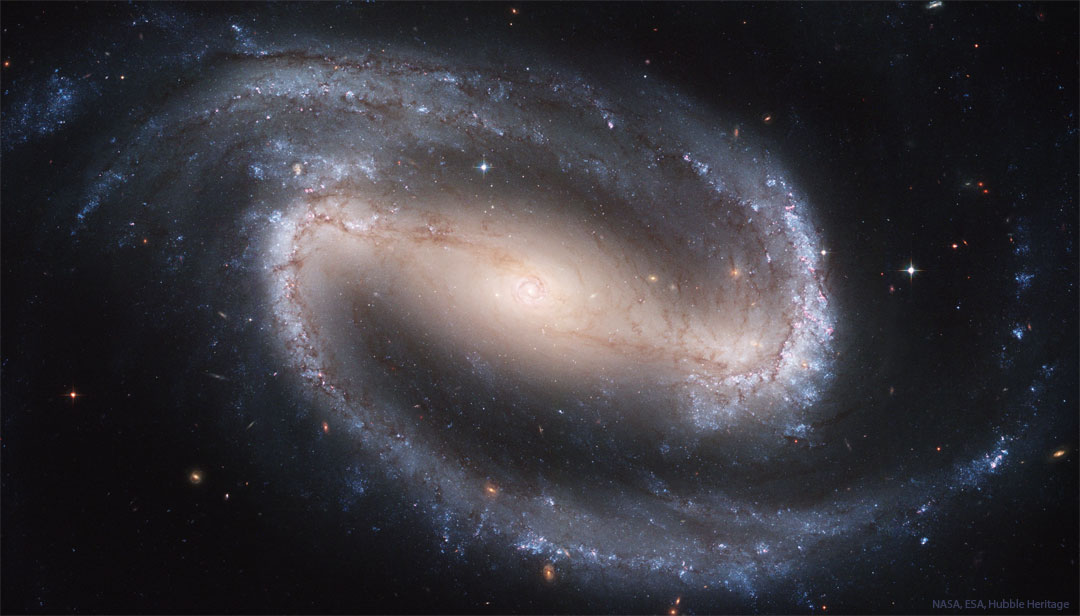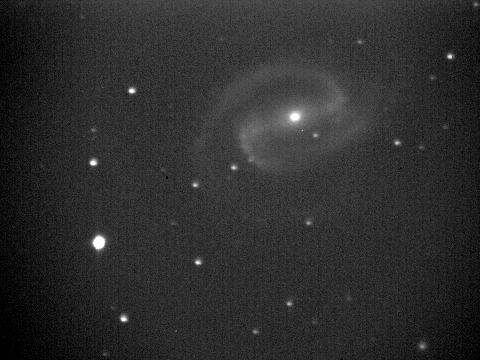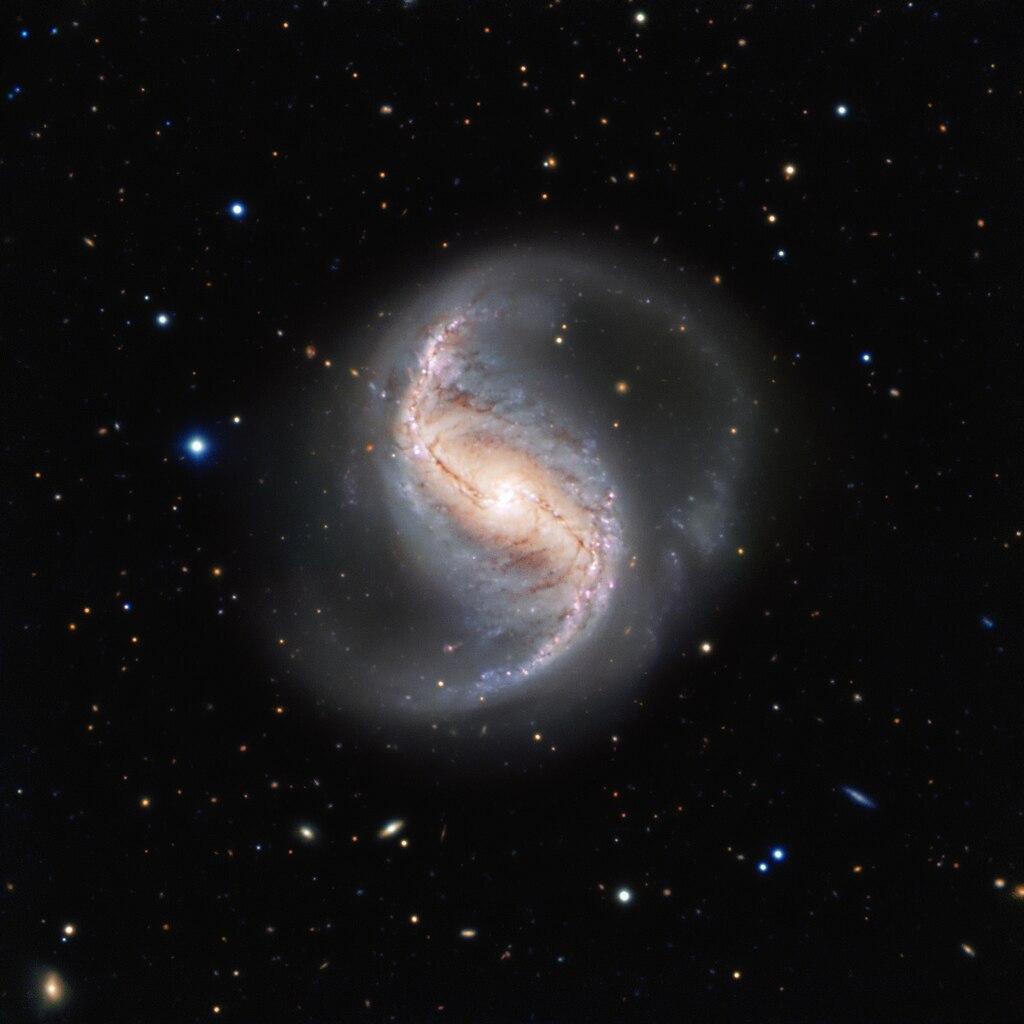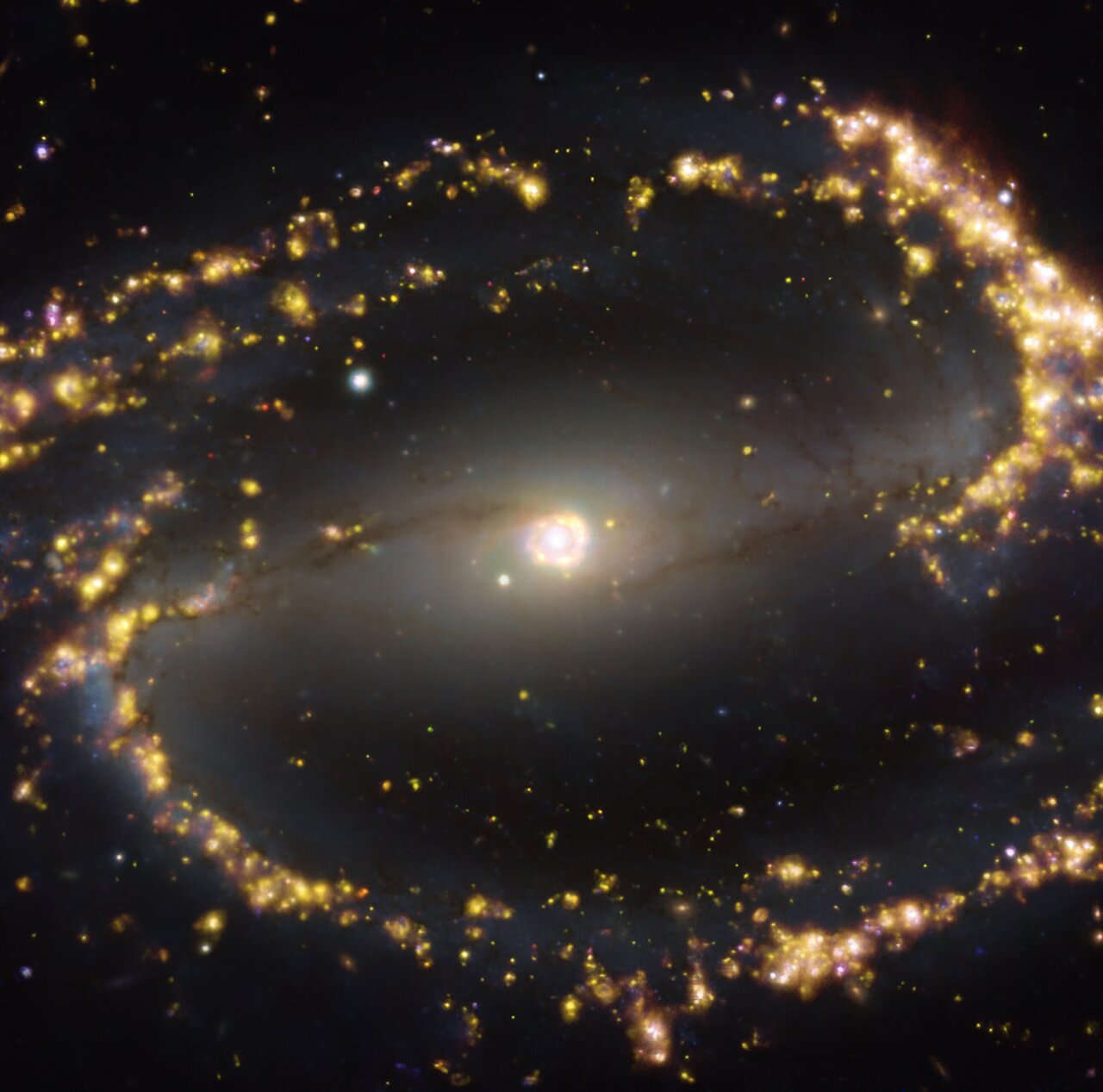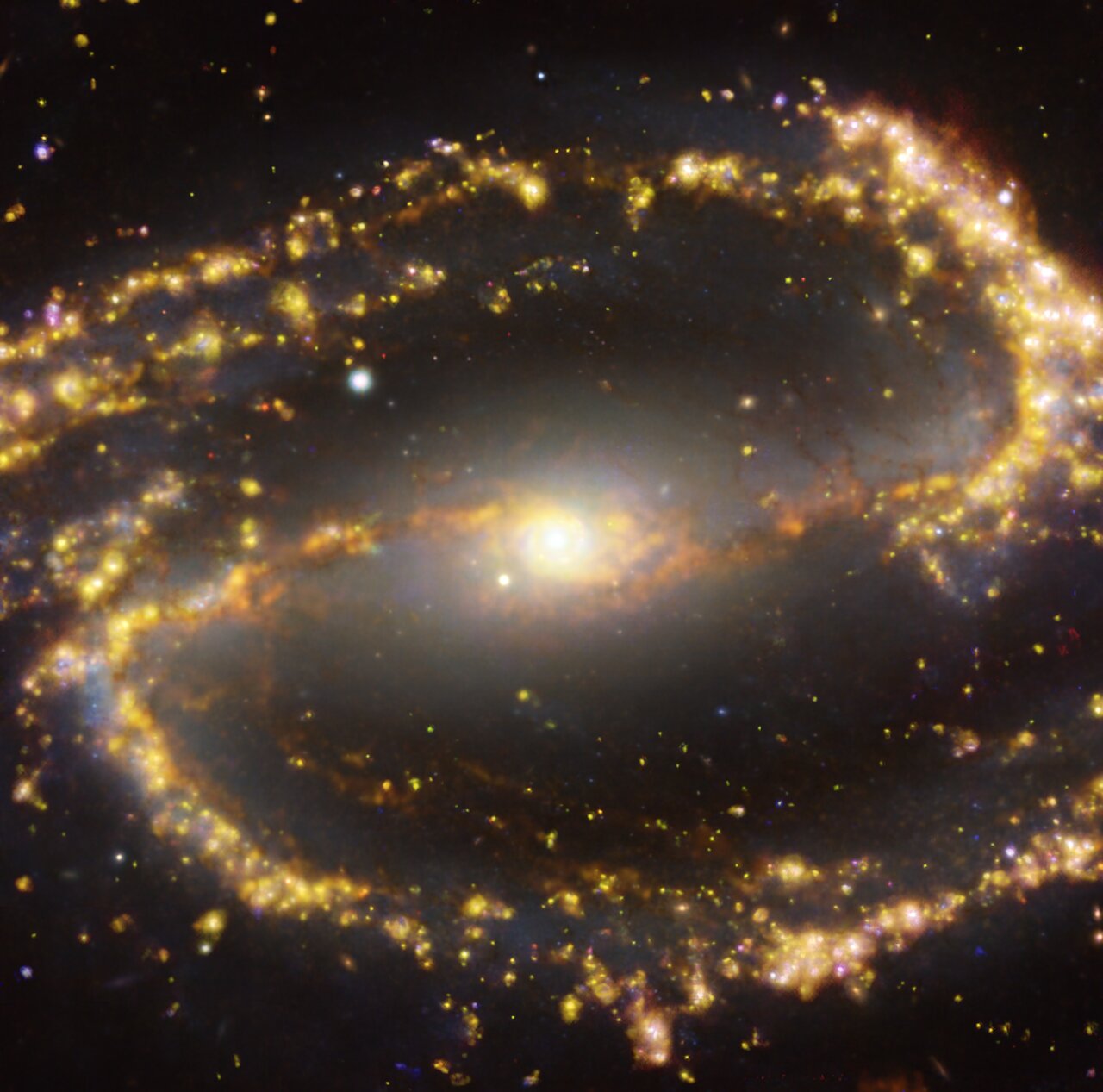NGC 1300 is interesting for several reasons. Obviously for the enormous length of its bar. But it is interesting for other reasons, too.
For one thing, the entire galaxy is really faint, apart from its nuclear region:
Faint-looking NGC 1300 from "The Color Atlas of Galaxies" by James D Wray.
The picture of the faint-looking NGC 1300 is from my own copy of "The Color Atlas of Galaxies" (1988) by James D Wray. The pictures in Wray's atlas have been printed on glossy black paper, so when I took a picture of Wray's image using my cellphone, the glossiness of the page caused reflections that look a bit like broad jets or streamers. These features are not real and not a part of Wray's photograph.
Searching the web, I found another picture that showed NGC 1300 in much the same way as James D Wray, with a very bright center but otherwise faint features overall:
We do see more of the arms of NGC 1300 in the photo by Orange County Astronomers than we see in Wray's image. Actually, most spiral galaxies in Wray's atlas have much fainter arms than we are used to seeing, because Wray never amped up the brightness of spiral arms. (He didn't have the resolution to do so, obviously.) But not all galaxies in his atlas are limb-challenged as NGC 1300.
Let's look at Wray's version of NGC 986, which is another galaxy with a long bar:
NGC 986. Photo: James D Wray.
Wray's picture of NGC 986 is not quite comparable to his picture of NGC 1300, because he used a somewhat larger telescope for his picture of NGC 986 (a 1 meter telescope, versus a 0.7 meter telescope for NGC 1300), and also he used a longer exposure time for NGC 986.
Nevertheless, it is clear that these two galaxies are indeed different. NGC 986 is so rich in dust that it is two magnitudes brighter in far infrared light than in B light, whereas NGC 1300 is somewhat fainter in infrared light than in B light. Galaxies that are bright in far infrared light contain a lot of dust and are often rich in star formation. It is hard to judge from "prettified" images on the web, but I would be surprised if NGC 986 does not contain a lot more star formation than NGC 1300.
Another interesting thing about NGC 1300, compared with NGC 986, is that its arms appear to be "pressed down" and almost "doubled over" above its nuclear region, as if something was pushing them down there. One arm appears to be particularly "weighed down". But if the arms are hard pressed to rise much above the central bar, the core of NGC 1300 appears round and face on.
I have read somewhere that if a galaxy has a very massive black hole, then the pull of the black hole will affect the "pitch angle" of the arms so that they are not as "open", but "lower down" in relation to the core. According to
Wikipedia, the central black hole of NGC 1300 may have a mass of ~7.3×10
7 M
☉ (with a large uncertainty). If we assume that the mass of the central black hole of NGC 1300 is indeed ~73 million solar masses, then it is more than 15 times more massive than the black hole of the Milky Way, whose mass is ~ 4 million solar masses. Perhaps the black hole of NGC 1300 is indeed pulling down its arms?
Ann
 Barred Spiral Galaxy NGC 1300
Barred Spiral Galaxy NGC 1300